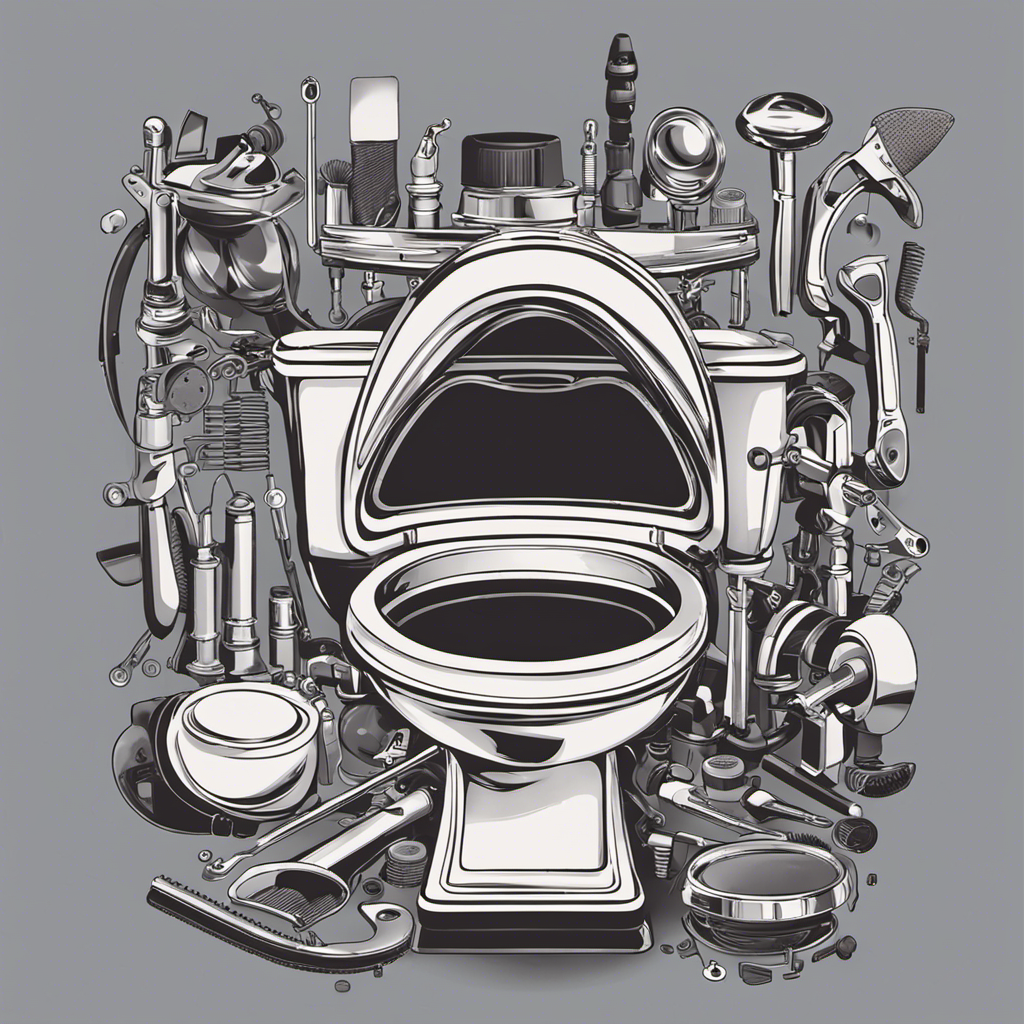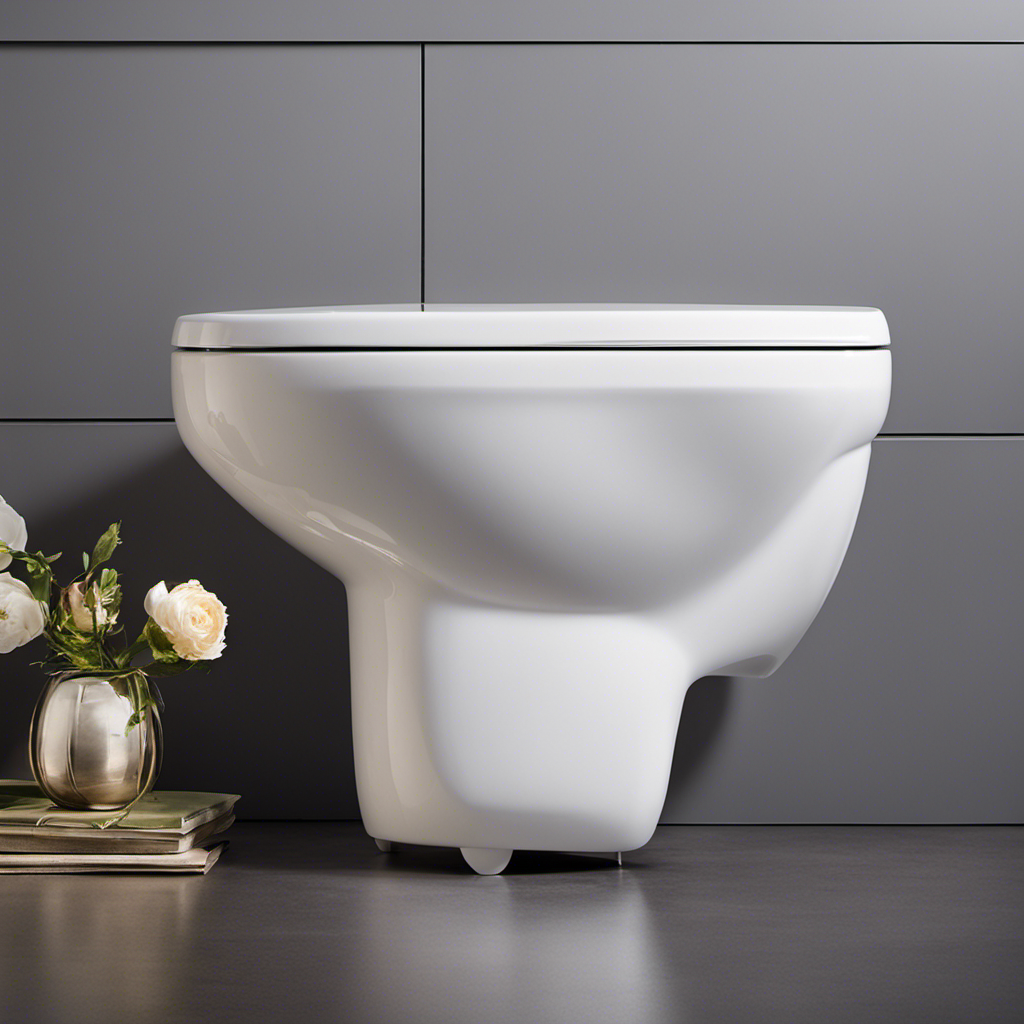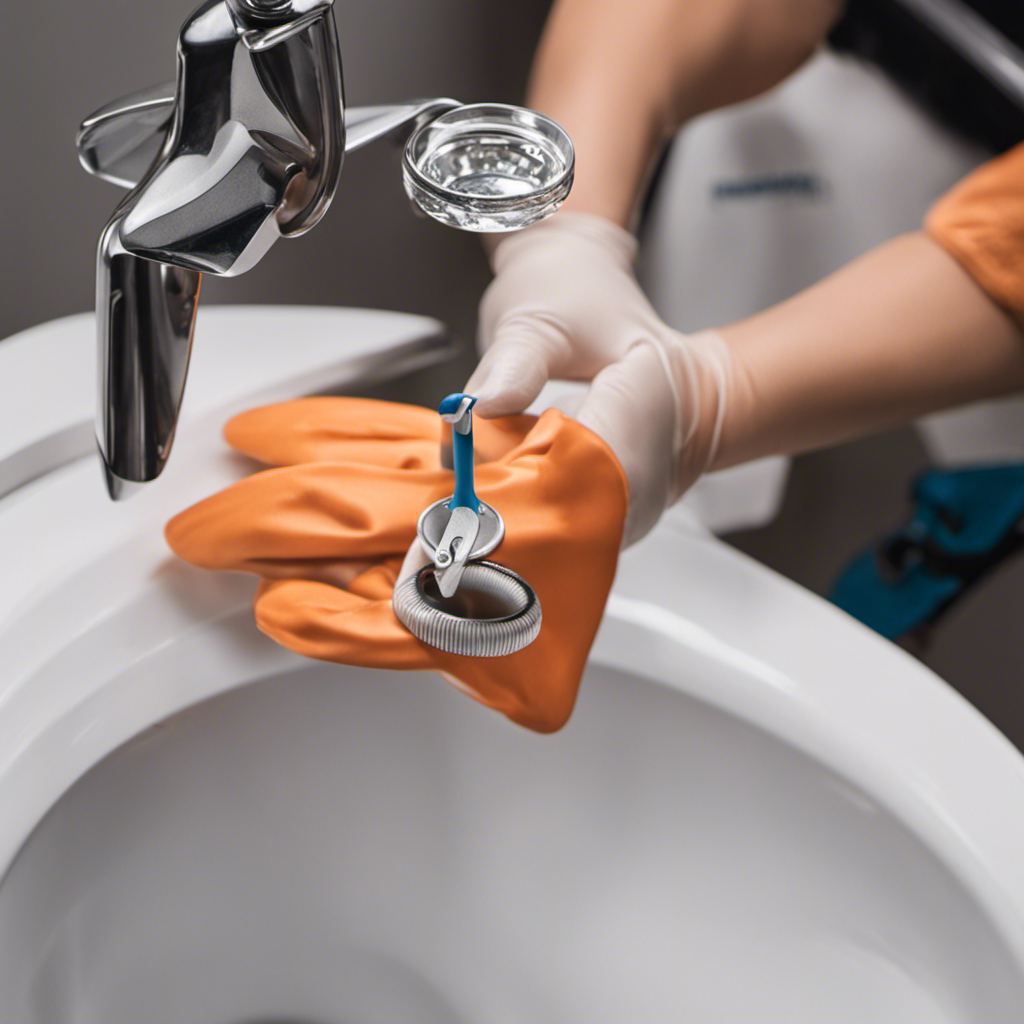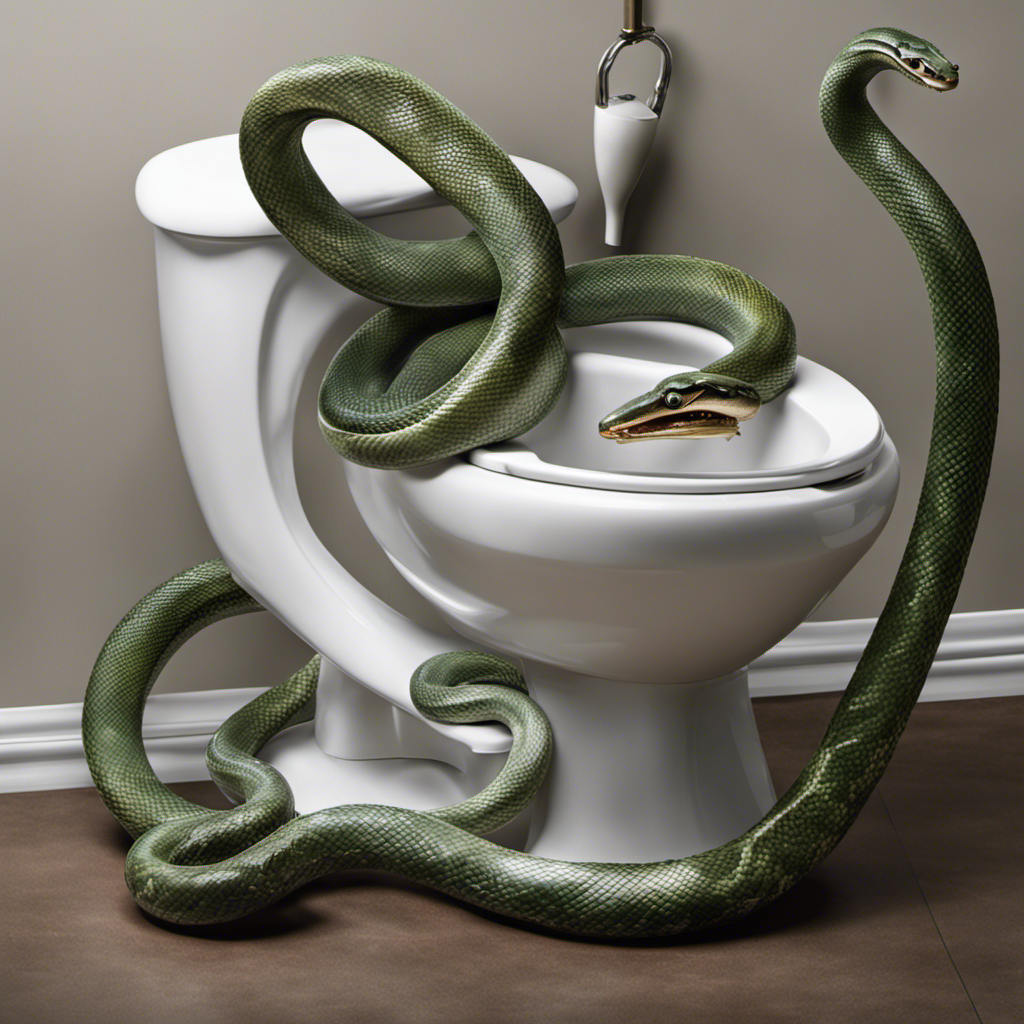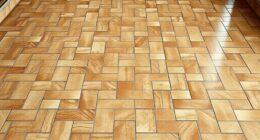So, you’re in a bit of a predicament – you need to get that stubborn toilet seat off. Don’t worry, we’ve got you covered.
In this article, we’ll walk you through the step-by-step process of removing a toilet seat. With just a few simple tools and a little bit of know-how, you’ll have that seat off in no time.
So, let’s get started and bid farewell to that old, worn-out seat once and for all.
Key Takeaways
- Use the right tools such as a screwdriver, pliers, and adjustable wrench to remove the bolts or screws holding the toilet seat.
- Turn the bolts or screws counterclockwise to loosen them before lifting off the toilet seat.
- If the bolts or screws are stuck or rusted, apply lubricant like WD-40 to help loosen them.
- If unable to remove the bolts or screws, seek professional help or consider alternative fastening methods like adhesive strips or zip ties.
Tools Needed
To get the toilet seat off, you’ll need a screwdriver and a pair of pliers.
Removing a toilet seat is a simple task that can be done by following a few steps.
Start by locating the two bolts on the underside of the toilet seat. These bolts hold the seat in place and need to be unscrewed.
Use a screwdriver to loosen the bolts, and then use the pliers to grip the bolts and turn them counterclockwise until they are completely removed.
Once the bolts are removed, you can easily lift the toilet seat off the toilet bowl.
This process is essential for toilet seat installation or replacement, and with the right tools, it can be done quickly and efficiently.
Preparing the Toilet
Start by making sure the bathroom is well ventilated before attempting any maintenance. Proper ventilation will help prevent any unpleasant odors or fumes from lingering in the air.
To prepare the toilet for toilet seat installation or replacement, follow these steps:
-
Clean the toilet: Use a mild cleaner and a soft cloth to clean the entire toilet bowl and seat area. This will ensure a clean and sanitary surface for the new seat.
-
Gather the necessary tools: You will need a screwdriver or an adjustable wrench to remove the bolts or screws holding the old seat in place.
-
Check for any damage: Inspect the toilet bowl for any cracks or damage. If you notice any issues, it may be necessary to repair or replace the entire toilet.
-
Turn off the water supply: Locate the shut-off valve near the base of the toilet and turn it clockwise to shut off the water supply. This will prevent any water from leaking while you work.
Once you have prepared the toilet, you can move on to the next step of removing the bolts or screws holding the old seat in place.
Removing the Bolts or Screws
To remove the bolts or screws from your toilet seat, there are a few key points to keep in mind.
First, make sure you have the necessary tools, such as a wrench or screwdriver, to safely and effectively remove the fasteners.
Next, carefully loosen the bolts or screws by turning them counterclockwise, being cautious not to strip or damage them in the process.
If you encounter any difficulties, there are alternative fastening methods available, such as using adhesive or zip ties, which can provide a secure and reliable solution for attaching your toilet seat.
Bolt or Screw Removal
You’ll need a wrench to remove the bolts or screws holding the toilet seat in place. Here are some alternative removal methods and troubleshooting common issues:
-
Use a screwdriver: If the bolts or screws are not too tight, you can try using a screwdriver instead of a wrench. Make sure to choose the right size to fit the screws.
-
Apply lubricant: If the bolts or screws are rusted or stuck, applying some lubricant like WD-40 can help loosen them. Let it sit for a few minutes before attempting to remove them.
-
Use pliers: If the bolts or screws have stripped heads, you can try using pliers to grip and turn them. Be careful not to damage the surrounding area.
-
Seek professional help: If you’re unable to remove the bolts or screws yourself, it’s best to call a professional plumber who can safely remove the toilet seat for you.
Remember to follow the manufacturer’s instructions and exercise caution when removing the toilet seat to avoid any damage.
Alternative Fastening Methods?
If the bolts or screws are giving you trouble, consider using a different fastening method. There are alternative materials and DIY options that can make removing a toilet seat easier and more efficient. One popular alternative is using adhesive strips or heavy-duty Velcro to secure the seat in place. These options eliminate the need for screws or bolts and provide a secure hold. Another option is using wing nuts or thumb screws, which can be easily tightened or loosened by hand. These alternatives not only simplify the removal process but also offer flexibility when it comes to adjusting or replacing the seat. So, if traditional fastening methods are causing frustration, don’t hesitate to explore these alternative options for a smoother DIY experience.
| Alternative Materials | Pros | Cons |
|---|---|---|
| Adhesive Strips | Easy to use, secure hold | May leave residue |
| Velcro | Strong hold, adjustable | May require frequent readjustment |
| Wing Nuts | Easy to tighten/loosen | May require tools |
| Thumb Screws | Convenient, no tools needed | May loosen over time |
Detaching the Seat From the Toilet
First, locate the two bolts securing the toilet seat. These bolts are typically located at the back of the seat, near the hinges. Use a screwdriver or wrench to unscrew the bolts counterclockwise until they are loose.
Once the bolts are loose, lift the seat and lid off the toilet bowl. Be careful not to drop the seat or lid, as they can be heavy and may cause damage.
If you are replacing the seat due to broken hinges, now is a good time to inspect the hinges and determine the type of toilet seat you have. There are various types of toilet seat hinges, such as plastic, metal, or quick-release hinges. Make a note of the type of hinges you have so you can purchase the correct replacement.
Cleaning the Area
When it comes to cleaning your toilet, it’s important to know the most effective techniques to ensure a thorough clean. From using the right cleaning products to employing proper scrubbing techniques, there are various methods that can make the process more efficient.
Additionally, dealing with stubborn stains can be a challenge, but with the right approach and a little elbow grease, you can effectively remove them and leave your toilet looking spotless.
Effective Cleaning Techniques
To effectively clean the toilet seat, make sure to use a disinfectant spray. This will help eliminate bacteria and germs, leaving the seat clean and sanitary.
Here are some tips for effective cleaning:
-
Spray the disinfectant directly onto the toilet seat, covering the entire surface.
-
Let the disinfectant sit for a few minutes to allow it to penetrate and kill any bacteria.
-
Use a clean cloth or disposable wipe to wipe down the seat, making sure to remove any dirt or residue.
-
For a more thorough clean, consider using eco-friendly cleaning products that are safe for both you and the environment.
By following these steps, you can ensure that your toilet seat is properly cleaned and free from harmful bacteria.
Remember to always wash your hands after cleaning to maintain good hygiene.
Removing Stubborn Stains
If you’re struggling with stubborn stains on your toilet seat, try using a combination of baking soda and vinegar. This powerful duo is one of the most effective cleaning products for removing tough stains.
Start by sprinkling baking soda directly onto the stained area. Let it sit for a few minutes to absorb any odors and loosen the stain. Then, pour vinegar over the baking soda and watch it fizz and bubble. The chemical reaction between the two ingredients helps to break down the stain and lift it away.
Use a scrub brush or sponge to gently scrub the area, focusing on the stained spots. Rinse with water and repeat if necessary.
This DIY stain removal technique is easy to do and has proven to be highly effective in getting rid of stubborn stains on toilet seats.
Installing a New Toilet Seat
You can easily install a new toilet seat by following these simple steps:
-
Measure the size: Before purchasing a new toilet seat, measure the dimensions of your toilet bowl. This will ensure that you choose the right size and avoid any fitting issues.
-
Choose the right material: Toilet seats come in various materials, such as plastic, wood, or cushioned. Consider factors like durability, comfort, and aesthetics when selecting the material that best suits your needs.
-
Align the seat: Place the new seat on top of the bowl, aligning the bolt holes with the holes on the toilet. Make sure it is centered and sits securely.
-
Secure the seat: Insert the bolts into the holes and tighten them using a screwdriver. Be careful not to overtighten, as this may cause damage.
By following these steps, you can easily install a new toilet seat and enhance the functionality and appearance of your bathroom.
Now, let’s move on to some maintenance tips to keep your toilet seat in top condition.
Maintenance Tips
Regular cleaning and proper care will help keep your toilet seat in excellent condition. To maintain your toilet seat, start by cleaning it regularly with a mild detergent and warm water. Avoid using harsh chemicals or abrasive cleaners as they can damage the surface. Additionally, make sure to wipe the seat dry after cleaning to prevent any moisture buildup.
If your toilet seat becomes loose over time, it may need to be tightened. To do this, locate the screws underneath the seat and use a screwdriver to tighten them.
If your toilet seat is beyond repair, it may be time for a replacement. When installing a new toilet seat, follow the manufacturer’s instructions carefully to ensure a proper fit.
Conclusion
Congratulations! You’ve successfully mastered the art of removing a stubborn toilet seat. With a little elbow grease and the right tools, you’ve tackled this task like a seasoned pro.
Now that you have a clean slate, you can restore your throne to its former glory or even upgrade to a new seat that suits your style.
Remember to maintain your toilet seat regularly to ensure a comfortable and hygienic experience every time.
Happy toilet seat adventures!
